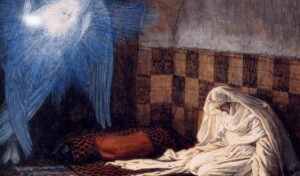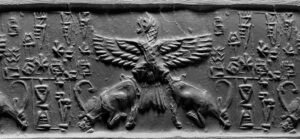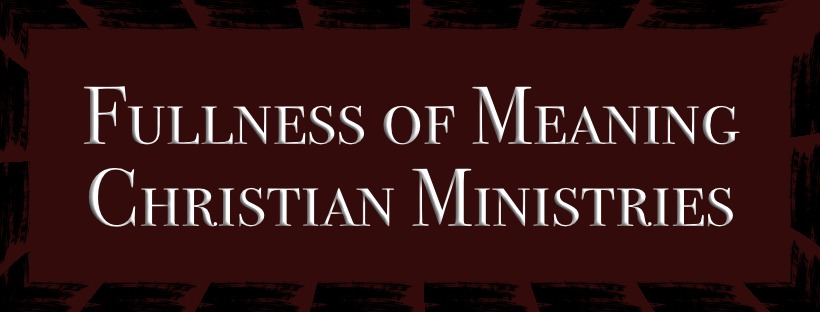“The earliest ideas of Eternity were associated in pictographic form originally. This allowed for ‘pictures’ to be ‘as words’ in the European world, let alone the recipients of the Semitic world. How much of these pictographic societies such as the Early Chinese, Sumerian, Egyptian, Hittite and Dravidian convey the idea of the ‘eternal’? Did these earlier cultures lose their weight in conveying a non-analytical idea of eternal ‘spatiality’ and ‘time’? How distant were these concepts to the Medieval World? Did King James’ translators have a grasp of any of this? Was *eternity* looked at as ‘segmented times’ in the Middle Ages amidst the Jacobian era? I can say a big Nope for all of these. Let’s take a light jab at this word *eternity* from what our ancestors thought. This is only a light dig into a much deeper study that fomcm.com will endeavor. Thank you for listening!”

Hell Part 2
“Forever”, looked at as an exact time frame, is a very interesting philosophical topic, yet, it is a cosmological, astrological and agricultural ‘event’ as ‘representation’. As I stated, eternal time was mythically *signified* through the temporal practices of village participants. Such ‘eternal’ participation involved dancing, usage of the ‘masks of

Hell Part 1
Truths of God were not the same as the Biblical Patriarch’s understanding of their surroundings. Nonetheless, there was a symbiosis between YHVH and Israel through YHVH’s ‘metalogue’. God might say “forever” concerning HIS statutes …yet, there was no example of specific ***relatable*** ‘Time-mapping’, only conceptualizing of ‘referred continuance’ by the

The Wholeness of the Story of Jesus’ Virgin Birth
0:00 0:00 skip_previous play_arrow pause skip_next volume_up volume_down volume_off share description view_headline Nothing found! close Auto scroll close

John Style of Writing the Apocalypse
“The Johannine writings of Revelation exemplify a genius literary mechanism called ‘parataxis’. Parataxis omits subordination of conjunctions therefore allowing equal themes to be threaded together into a potential meshwork of Genius, namely found in Revelation. John was given a Greek culture by which ideas were conveyed. The Greek language by

Tolkien Ideas of ‘Faith’ Through the Fantastic
“Willing Suspension of Disbelief: Great Fantasy writings demand our ‘belief’ in the world of Fantasy, hence, they demand a *suspension of disbelief of the Fantasy Writing*. The effect by which this subcreator-writer conveys can ONLY happen by this *kind* of faith. Likened to this, “Faith” in the Biblical God and

The Teleology of Universalistic Predeterminism Part 4
“Romans 11:28 – Many of them (Israel) are enemies for YOUR SAKE….but as regarding ELECTION, they (Israel) are beloved for the sake of their forefathers’. The love of God knows no bounds. Hatred is a Human condition and is used to calibrate an outcome. In this lecture we find the

The Teleology of Universalistic Predeterminism Part 3
“In this lecture we cover the souls that exist in, around and at the Great Throne of God AFTER the Second Judgement-i.e., the Final Judgement, the Final Ressurection, the Final Restoration. We find that not only are the Saints there but the “douloi” of the Nations-i.e., the Heathen–‘ethnoi’ “. Only

The Teleology of Universalistic Predeterminism Part 2
“This audio lecture covers what Aeon is and what it is not. As we stated in the past written and audio lectures, Aeon means ‘ages’ of finite but undefined time. Aeon is the root word for ‘ages’ used in conjunction with ‘punishment (kolosin)’ by which there is a ‘duration of

The Teleology of Universalistic Predeterminism Part 1
“Apocalyptic Literature is not all about the future- but, rather, it is a type of poetry to express God’s Universal Plan in a collective of time-Aeon 0:00 0:00 skip_previous play_arrow pause skip_next volume_up volume_down volume_off share description view_headline Nothing found! close Auto scroll close

“Preface to Infinity is not eternity”
“The earliest ideas of Eternity were associated in pictographic form originally. This allowed for ‘pictures’ to be ‘as words’ in the European world, let alone the recipients of the Semitic world. How much of these pictographic societies such as the Early Chinese, Sumerian, Egyptian, Hittite and Dravidian convey the idea of

IM.IM.DU.GUD (Anzu Bird) *Intimations of the Story of Cain and his Restoration to YHVH.
“In this short piece I cover the Sumerian etymologies of the Anzu Bird and its associations with the early world of Cain. 0:00 0:00 skip_previous play_arrow pause skip_next volume_up volume_down volume_off share description view_headline Nothing found! close Auto scroll close

Prelude to Presentation of “Cain, Yahveh’s Restored One and First Apostle”
“As we continue our studies into the wandering Cain, we find Cain’s track moniker is found in his metalurgic works. It shouldn’t surprise us to find that YHVH would have restored Cain by the officiating of Cain’s clan to guard the Tree of the Knowledge of good and evil” 0:00

